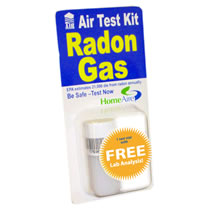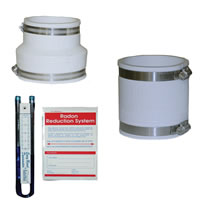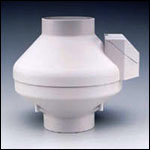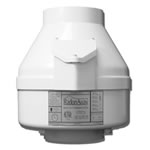|
||||
|
Does my house have radon? According to the EPA nearly 1 out of every 15 homes in the U.S. is estimated to have elevated radon levels. The only way to know about your home is to test. We sell test kits just for this purpose! The average indoor radon level is estimated to be about 1.3 pCi/L, and about 0.4 pCi/L of radon is normally found in the outside air. The EPA recommends a radon mitigation systems if your radon level is 4 picocuries per liter (pCi/L) or higher. Radon levels less than 4 pCi/L still pose a risk, and in many cases may be reduced.
If you are here, you probably are interested in a Radon mitigation fan. If you are replacing an existing radon fan, it's generally advisable to replace it with one having at least the same flow and static pressure capability. For new construction, there are no hard and fast rules to selecting a fan. The purpose of a radon fan is to remove radon from below your concrete slab, generally through a network of corrugated pipes. There are many factors that can affect your system effectiveness and it is critical that this system removes as much radon as possible. The purchase price of the radon fan will be very small compared to the 10-20 years (fan lifetime) of electrical cost. Whatever your choice, measure and monitor your radon levels regularly.
Typical installation. 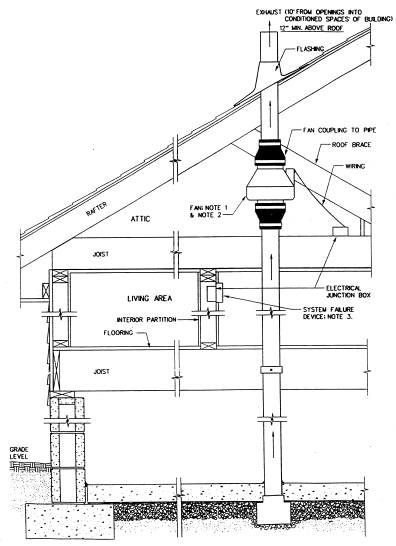 Note that the fan is installed in the attic (location is one of the most popular questions we get). The preferred attic location ensures that the entire piping run is under negative pressure (suction) so that if a leak develops inside the house, air leaks into the pipe. The fan is also protected from the elements. Many radon mitigation fans are also installed on an outside wall and both the Fantech and RadonAway fans are built with that in mind. Be sure to check your local codes to make sure an outdoor installation is acceptable. Rubber couplings are used to attach the fan to the PVC piping and help to isolate any vibration that the fan might develop over the years of service. 4" PVC is commonly used for radon mitigation systems since its long lasting and readily available. Both Fantech and RadonAway have fans for this size PVC pipe. |
||||
|
A serious note on radon safety: The choice of fan should be made by an on-site radon mitigation professional. Mitigating
a carcinogen is serious business and results vary tremendously based on soil conditions, setup, etc.
More Links: - Citizens Guide to Radon - EPA site - Radon Zone Education and Maps - EPA Site - Radon Architectual Drawings - EPA Site - Radon Fans and Couplings As always, if you would like to ask more questions about this or other technical topics give us a call at 877-711-4822 - 9-5 PST. Live people for technical and sales support - an Internet first! |
HVACQuick.com
high performance ventilation & green products - large in-stock inventory!
- team@hvacquick.com
- 888-855-7229

